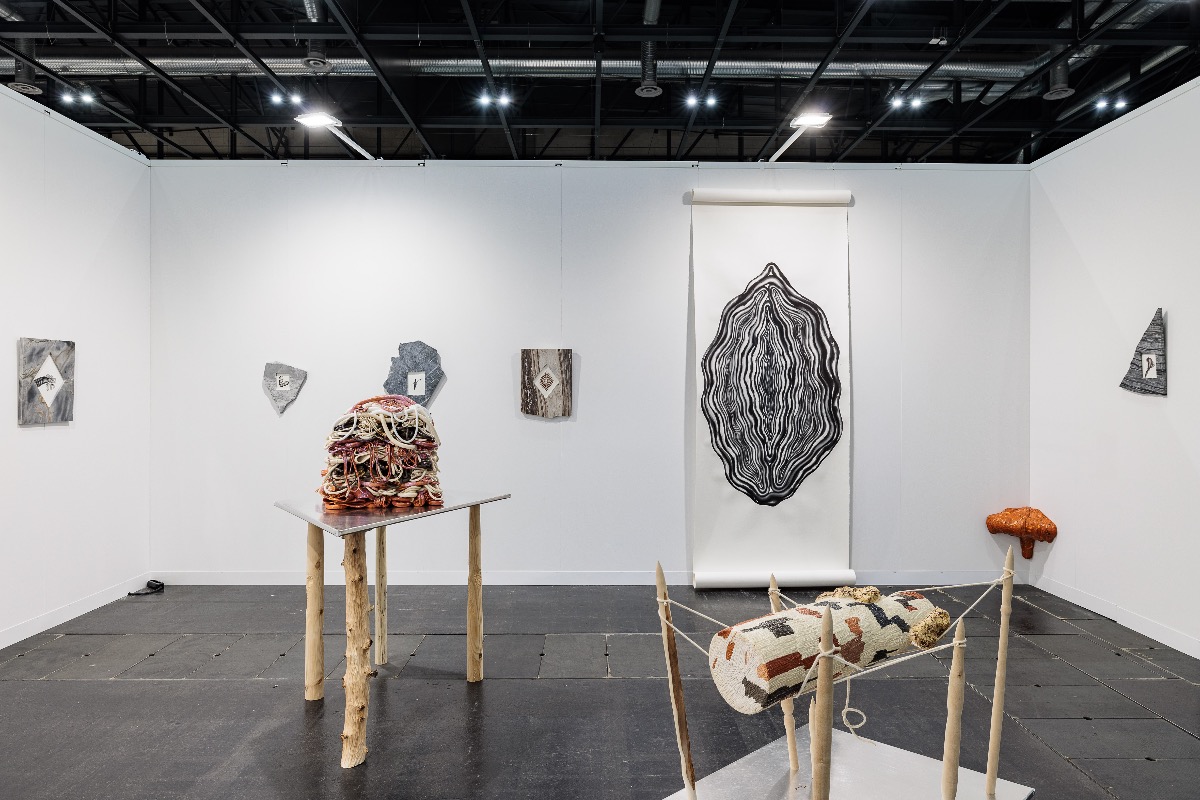
On the storm and art
Notes after experiencing viennacontemporary 2024
People usually aren’t fond of storms. They are inevitable and (mostly) beyond the control of human will and control. And so it was with Storm Boris, which swept across Central Europe last weekend and reached its peak in Austria on the very days during which the viennacontemporary contemporary art fair took place in Vienna.
Despite the tempest going on in the city’s streets, the 10th edition of viennacontemporary, this time hosted by Messe Wien, attracted more than 17,000 visitors. I’d wager to say some of them were not particularly keen to head back out into the rain and wind, and therefore stayed longer at the fair than they would have if the city had still been experiencing the unusually summery weather prevailing earlier that week. 98 galleries and 360 artists – from both within the region and outside of it – took part in this year’s viennacontemporary (viennacontemporary positions itself as a fair with a focus on Austria, its neighbouring countries, and Eastern Europe). This was also the first edition of the fair under the artistic direction of Francesca Gavin. Interestingly, the previous artistic director of the fair was Boris Ondreička... how storms are assigned a name has always been a mystery to me.
Photo credit: kunst-dokumentation.com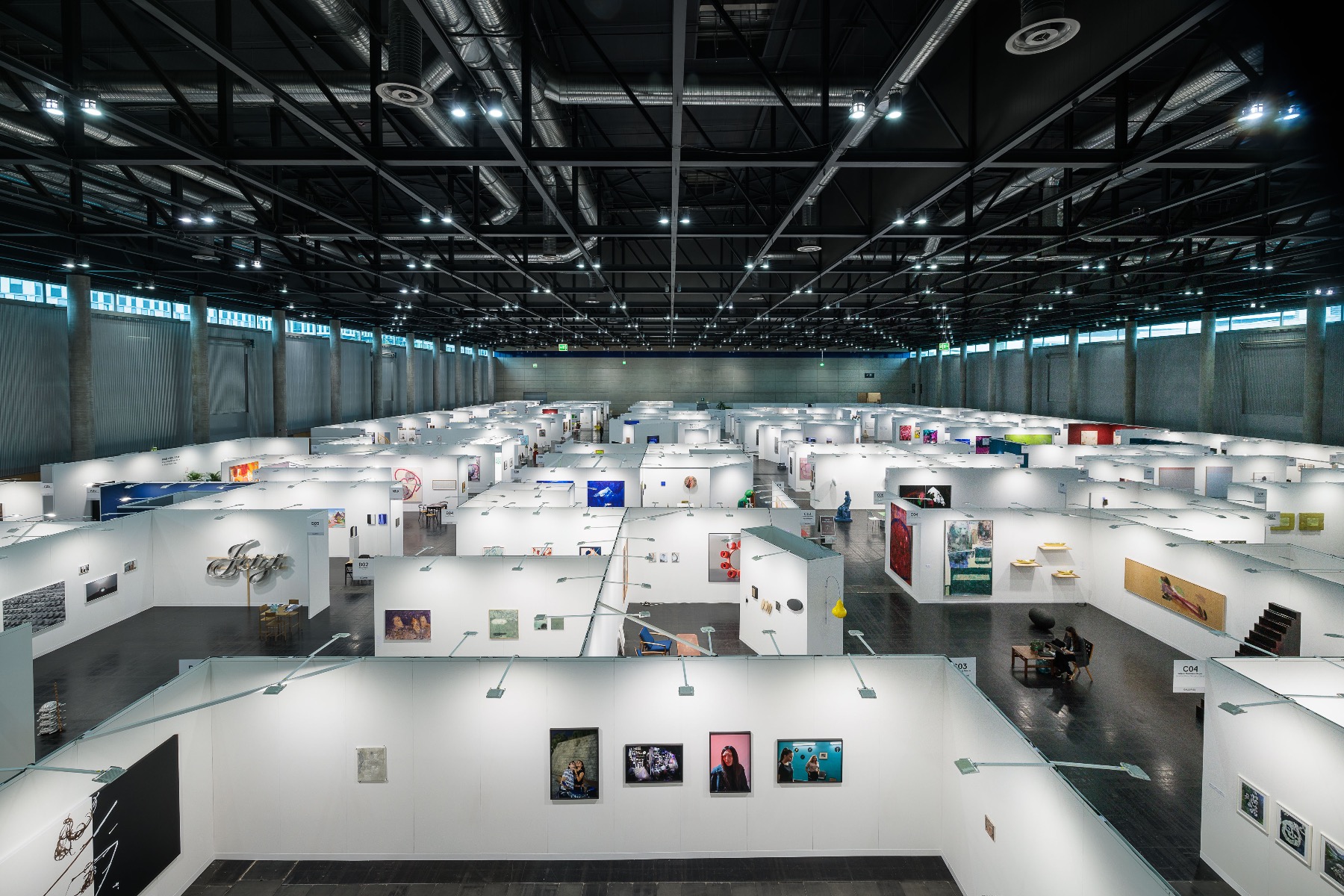
The backdrop for this viennacontemporary consisted of not only the storm, but also the current economic turbulence going on in Austria at the moment – behind the scenes, local galleries were commenting that the last time Austria had seen such a profound economic crisis was in the early 1990s, during the Gulf War. According to the WIFO Business Cycle Report of September 2024, the situation of Austria’s manufacturing and construction industries is worrying. If this economic downturn continues, the Austrian economy risks facing its longest recession in 25 years. According to Statistics Austria, nominal retail sales in the second quarter of 2024 rose by just 0.4 percent compared to the same period last year. In volume terms, this corresponds to a decline of 1.6 percent. Both Austrian gallerists and Vienna’s artists admit that the past summer was difficult. On a positive note, the inflation rate fell to 2.4 percent in August (it was still 2.9 percent in July).
In terms of sales, viennacontemporary is formally positioning its 10th edition as having been a success – in the fair’s summary press release (in which around 16 galleries shared their results), sale prices for their represented artists started at €2,300, with none surpassing €20,000. VARTAI gallery (Lithuania), for example, sold nine works by Monika Radžiūnaitė (two of which were sold in the exhibition and the rest through its partner, Artsy, for a total of €11,500), as well as two works by Donata Minderytė for €7,000. Galerie Crone, for its part, sold three works (by Josef Beuys, Nikolas Gansterer, and Clemens Kraus), which brought their total proceeds to five figures.
Neringa Vasiliauskaitė. Galeria VARTAI. Photo: Arterritory.com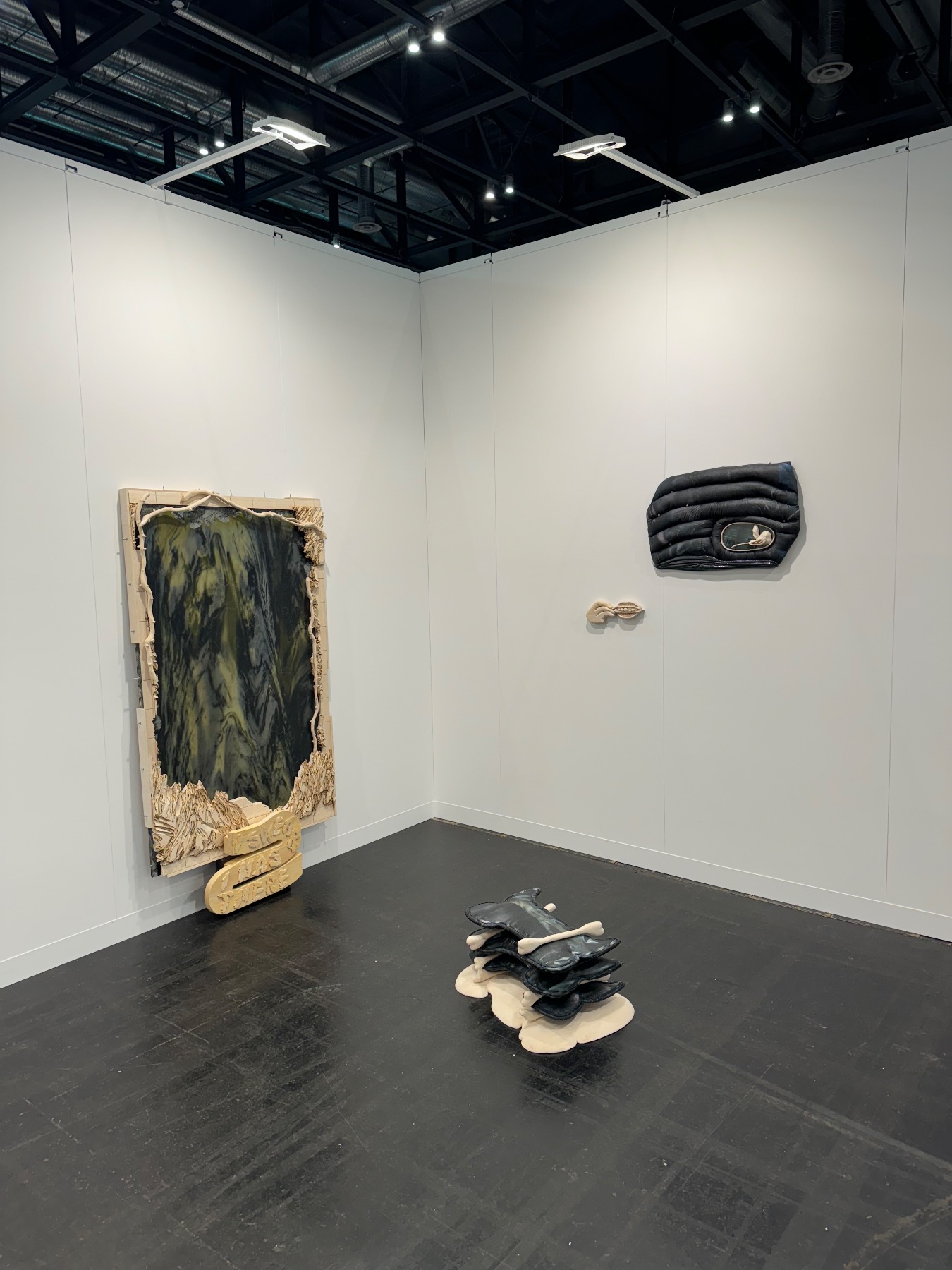
Overall, viennacontemporary is positioning itself as a sale-price-friendly art fair with the aim of participating in the shaping of the market and making it as accessible and interesting as possible for the younger generation of collectors. At the same time, this seemingly safe course in the context of the economic crisis has also proved to be a stumbling block: the fair, which is now clearly laid out and pleasantly enjoyable from the point of view of the space’s architectural design, is no longer artistically surprising, nor is there any moment of creative risk-taking or daring with which it could attract more attention. It feels as if any possibility of surprise has been left behind in favor of the default of reality.
Galerie Sturm Schober. Photo credit: kunst-dokumentation.com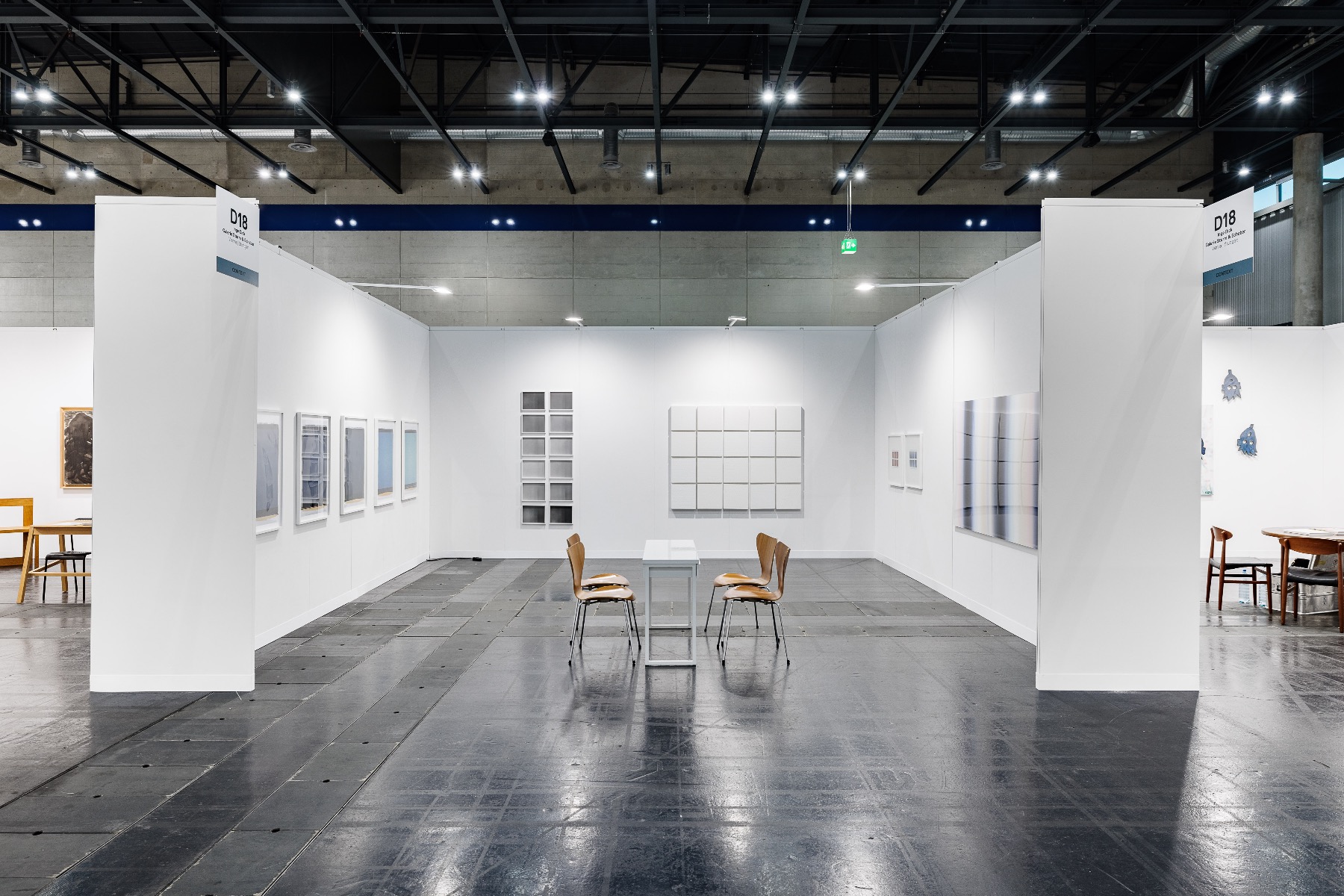
VUNU. Photo credit: kunst-dokumentation.com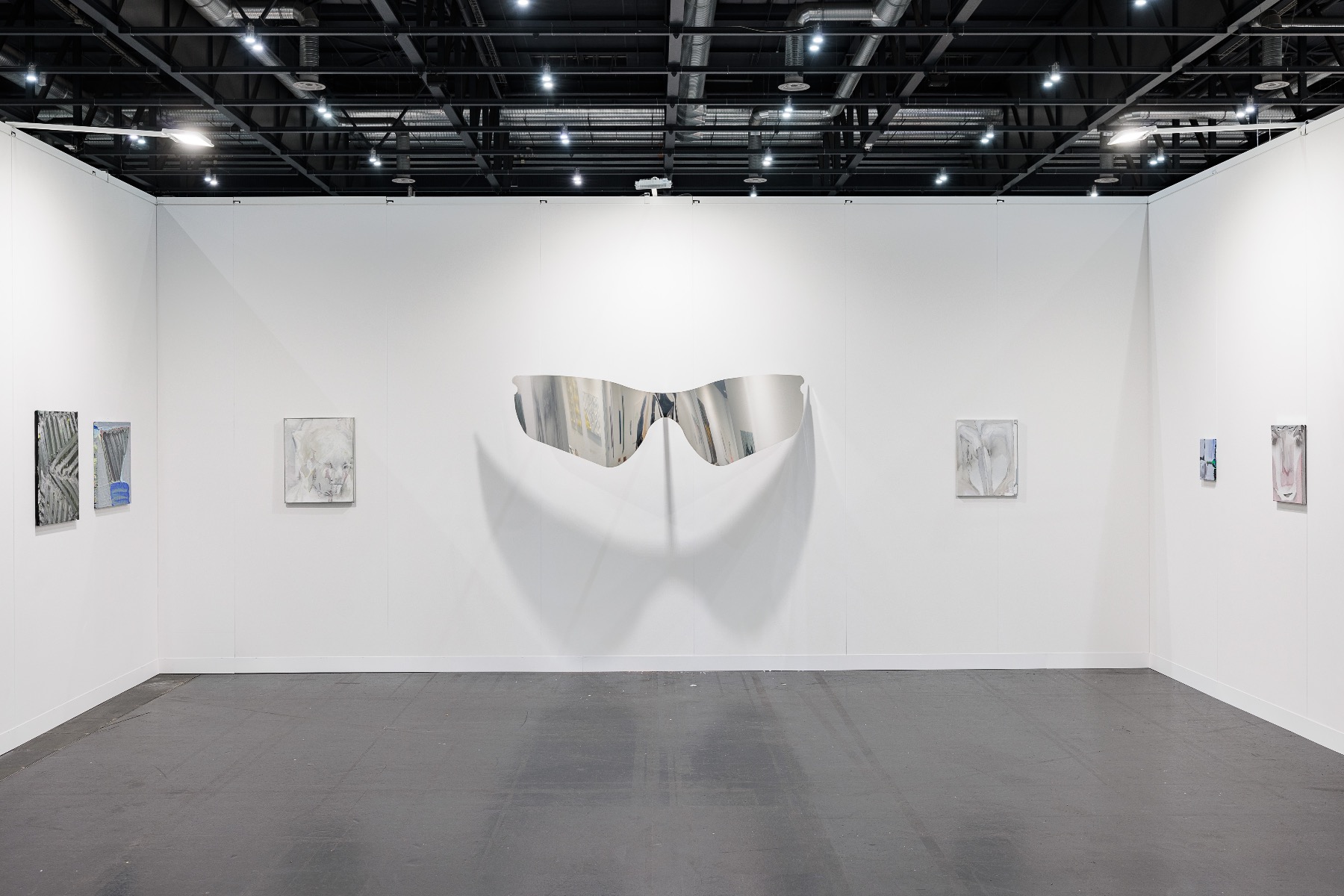
Undeniably, the art fair is one of the most accurate indicators of the current temperature of the art market. When asked to describe viennacontemporary from this point of view, Laura Rutkute, head of VARTAI gallery, replied: “This year's viennacontemporary felt somehow subdued, with a noticeable lack of international collectors; the atmosphere among gallerists was rather dimmed. Many expressed concerns about slow sales, and it seemed the market was more reserved than in previous years. While there was a lot of interest in the emerging artists we presented, the fair didn’t have the same energetic momentum we had experienced previously.”
“We have had many discussions with fellow gallerists and art dealers, and we have clearly agreed that the time for change is coming, or has already come. The traditional gallery model – one that is based on physical spaces and linear transactions – is no longer fit for the complexity of the contemporary art world. We need to evolve to a more adaptive, multidimensional approach, embracing collaboration across disciplines and geographies.”
“Several global factors are likely to be behind these changes: the development of digital platforms and online viewing rooms, the growing importance of social media in shaping art markets, and the shift towards experiential art and socially engaged practice. In addition, there is increasing pressure for sustainability and transparency in gallery practices.”
“The future of the gallery model is likely to involve closer partnerships with artists, collectors, and cultural institutions, or even technology companies, in order to create hybrid spaces that integrate both physical and virtual experiences. Such collaborations can help foster new ways of displaying and promoting art, thereby leading to a more dynamic, inclusive and resilient market.”
Lombardi—Kargl. Photo credit: kunst-dokumentation.com
Latvian artist Sabīne Vernere (who was represented at viennacontemporary by Estonia’s Kogo gallery), says that she does not travel to fairs often enough to comment on the temperature of the regional art market, but admits that being at viennacontemporary has given her “a joyfully hopeful feeling about the various currents that are emerging between younger generation artists and curators who are aware of the importance of collaboration, as well as the common history and problematics of the art environment, and are ready to work together to shape it.”
Sabīne, who also had a successful fair in terms of sales, adds that she really liked the fact “that galleries from Hungary, the Czech Republic, Poland, Lithuania, Romania, Croatia and Bulgaria participated in viennacontemporary. It was very interesting to talk to gallerists and art dealers during the fair and finding out that what is happening there is very similar to what is happening in Latvia in the context of contemporary art – both in terms of the struggle for state support and the initiatives created by artists themselves. I think it's very important to collaborate and reflect together on what is happening in the region.”
Galerie Sophia Vonier. Photo credit: kunst-dokumentation.com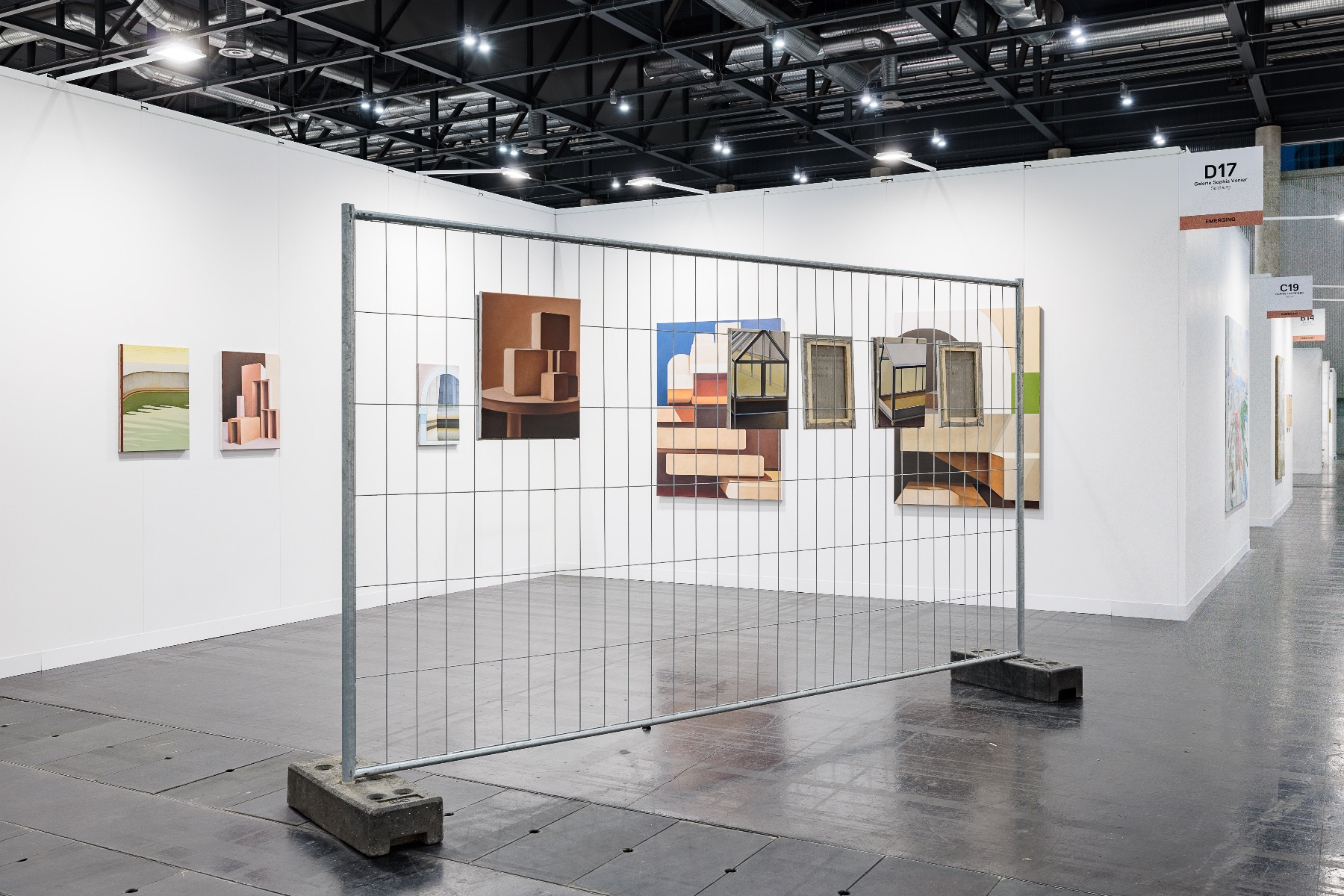
A successful collaborative project within the fair was the two-part exhibition The Color of Energy, which was part of the special program VCT STATEMENT: ENERGY. The first chapter of the exhibition was shown at viennacontemporary, whereas the second chapter will continue the narrative at the Salzburger Kunstverein shortly after the fair. The curator of the exhibition, Mirela Baciak, is the director of the Salzburger Kunstverein. As Baciak mentioned in her conversation with Arterritory.com before the opening: “Many fairs incorporate discourse, talks, and special exhibitions into their programs, which I generally think is a positive development. However, I'm uncertain about the social impact of art fairs specifically, though I am convinced of the social impact of art in general. I believe art can broaden our perspectives and deepen our understanding of the world.” When we later met at the fair, Baciak said that she was pleased that in terms of visitor numbers, the exhibition had been noticed, and that people were getting into the subject matter that the fair was bringing to the forefront. At the same time, if it had not been for the cooperation between the two cultural institutions, the relatively small exhibition in the middle of the fair would have seemed more like just a take on current headlines rather than a catalyst for serious discussion.
Veronika Hapchenko, Horses [konie], 2023, acryl and ink on canvas. Part of group show “Ruined”. Rodeo Gallery, hosted by Import Export Gallery and Rodeo Gallery. Courtesy of the Artist, Rodeo Gallery and Import Export.
Can an art fair become a space for stimulating societal impact? Moreover, could this also be seen as one of the tasks of art fairs in today's complex world ? “Art fairs like viennacontemporary are increasingly incorporating elements of intellectual and social participation, and I think this is not only positive but also necessary. While the main role of the art fair remains commercial, its ability to influence social dialogue and raise awareness should not be underestimated. However, for this to have a lasting impact, a sustained effort beyond the fair itself is needed,” says Laura Rutkute.
The ability of art to speak emotionally, aesthetically, and often more aptly than words about very complex and socially significant topics was vividly embodied in the series Dignity by Iranian-Austrian artist Soli Kiani, represented at the fair by Silvia Steinek Galerie. Her work focuses on women's rights in Iran. The artist herself has not gone back to Iran (where her family still lives) for seven years now, and given the political situation and the criticism contained in her work, is unlikely to return. “If one of the symbols of Iran used to be craftsmanship and carpets, now it is violence against women.” Using textiles as a medium, Kiani starkly yet aesthetically accents in her work also this fragment of “the fabric” of current world reality.
Clemens Krauss. Philosopher (2024., Fragment). Galerie Crone. Photo: Arterritory.com
How to accept the storm, adapt to it, survive it, and accept it as a teacher is a question that directly or indirectly applies to all of us, both individually and in any of our collective activities, including the art fair. The Albertina Museum Vienna is currently showing a retrospective of American artist Robert Longo, including his legendary wave drawings. “The shape of a wave is not always dictated by how strong the wind is. It’s dictated by what’s deep underneath it. It's like psychoanalysis,” Longo has said. Within the framework of viennacontemporary – in a completely different artistic language – Clemens Krauss’ series Philosopher (2014) reflects on this. Krauss, represented at the fair by Galerie Crone, is known for his distinctly thick brushstrokes of paint that transform his paintings from two-dimensional to three-dimensional. His images take on the illusion of flesh and movement, a sense of the depths and mystery hidden "underneath". As the artist himself says: "Paint is not only color, it's a matter."
Galerie Kandlhofer. Photo credit: kunst-dokumentation.com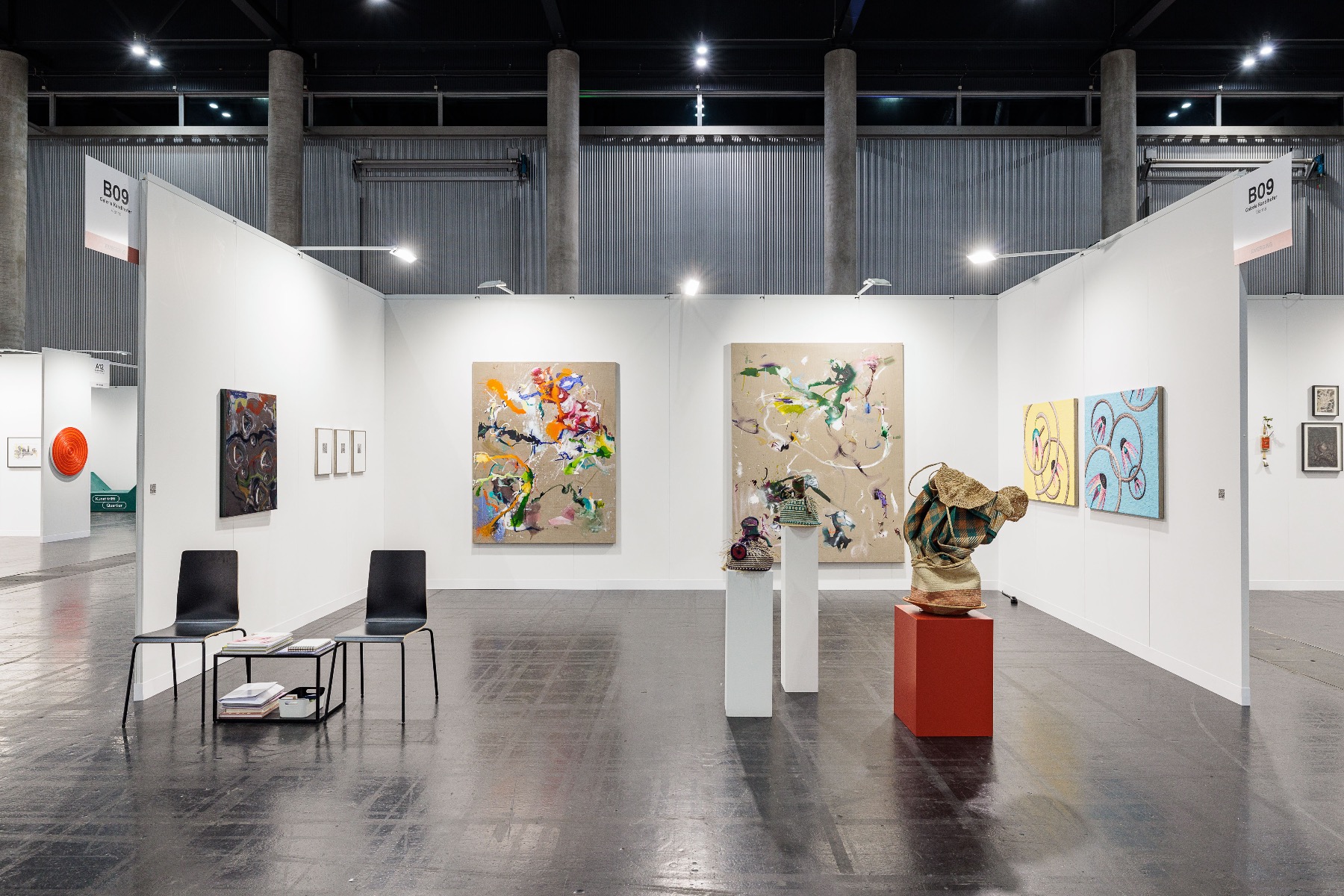
Gallery RIMA. Photo credit: kunst-dokumentation.com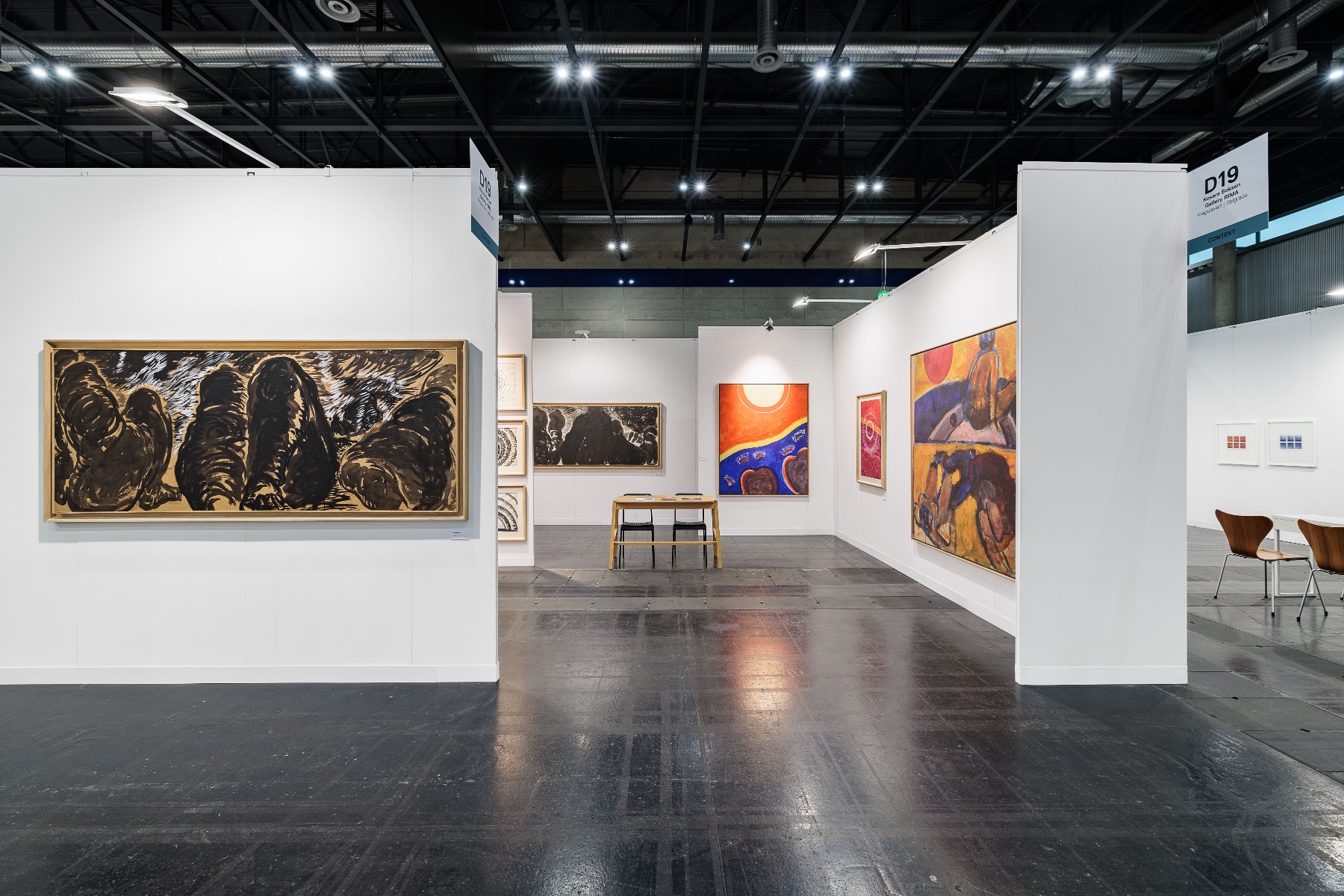
Perhaps the biggest element of viennacontemporary's success this time was the overall density and quality of concurrent art events going on in the city: the curated by 2024 gallery festival, the Parallel Vienna art fair, the contemporary art salon Particolare, and Erwin Wurm's 70th birthday retrospective at the Albertina Modern. Each of these events has its own audience as well as a collective one, thereby creating a fabric of artistic life that has many separate points but whose strength lies precisely in its connectivity. A conversation that begins at the fair, continues at the opening of the Erwin Wurm exhibition, and later in a gallery, a café, or in an artist's studio. Among those who benefit from this network are the conversation itself and the people participating in it, as well as the art scene in general, the overall well-being of society, and the local economy.
As Sabine Vernere says: "I absolutely loved the format of curated by, the parallel gallery festival that featured guest curators from all over the world exhibiting in 25 galleries throughout Vienna. I think it's a very successful way for local artists to meet young curators and find like-minded people with whom to curate meaningful exhibitions in the future."
Joanna Woś, Croy Nielsen.
Photo credit: kunst-dokumentation.com
Erwin Wurm's retrospective at the Albertina Modern features, among other works, his series Dreamers – which evokes Sigmund Freud's interpretation of dreams and the (headless) unconscious. Wurm has placed pillows, serving as “bodies”, upon knees and hands, thereby creating strange hybrids that themselves look like they have stepped out of a dream. His legendary Mind Bubbles and colorful, bodyless aluminium garments (the Substitute series, 2022) are also on view, encouraging us to choose the most paradoxical points of view in order to look at “our world from another perspective”. To be full of humor and intellectual at the same time... good advice for all of us right now, including the art fair – as both a business model and an institutional formation.
Title image: Works by Laura Põld and Sabīne Vernere at the Kogo gallery stand. Photo: kunst-dokumentation.com
